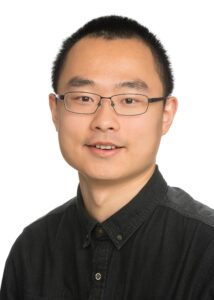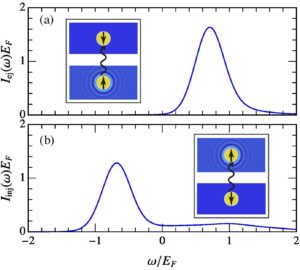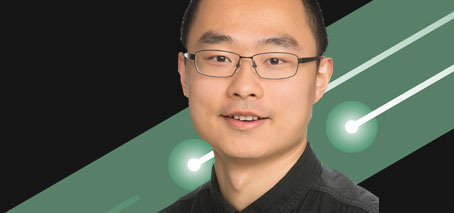
Dr Weizhe Liu is a Research Fellow working in condensed matter physics and quantum physics at Monash University School, of Physics and Astronomy.
What role does heat play in quantum impurity studies?
A new, Monash-led theoretical study advances our understanding of its role in thermodynamics in the quantum impurity problem.
Quantum impurity theory studies the behaviour of deliberately introduced atoms (ie, ‘impurities’) that behave as particularly ‘clean’ quasiparticles within a background atomic gas, allowing a controllable ‘perfect test bed’ study of quantum correlations.
The study extends quantum impurity theory, which is of significant interest to the quantum-matter research community, into a new dimension—the thermal effect.
“We have discovered a general relationship between two distinct experimental protocols, namely ejection and injection radio-frequency spectroscopy, where prior to our work no such relationship was known.” explains lead author Dr Weizhe Liu (Monash University School of Physics and Astronomy).
Quantum impurity theory
Quantum impurity theory studies the effects of introducing atoms of one element (ie, ‘impurities’) into an ultracold atomic gas of another element.
For example, a small number of potassium atoms can be introduced into a ‘background’ quantum gas of lithium atoms.
The introduced impurities (in this case, the potassium atoms) behave as a particularly ‘clean’ quasiparticle within the atomic gas.
Interactions between the introduced impurity atoms and the background atomic gas can be ‘tuned’ via an external magnetic field, allowing investigation of quantum correlations.
In recent years there has been an explosion of studies on the subject of quantum impurities immersed in different background mediums, thanks to their controllable realization in ultracold atomic gases.
Modelling ‘push’ and ‘pull’ with radio-frequency pulses

‘Push’ and ‘pull’: Impurity ejection (a) and injection (b) spectra in a quantum-gas experiment. An RF field drives a transition between the interacting (↑) and
noninteracting (↓) impurity spin states
“Our study is based on radio-frequency spectroscopy, modelling two different scenarios: ejection and injection,” says Dr Weizhe Liu, who is a Research Fellow with FLEET, FLEET working in the group of A/Prof Meera Parish and Dr Jesper Levinsen.
The team modelled the effect of radio-frequency pulses that would force impurity atoms from one spin state into another, unoccupied spin state.
- Under the ‘ejection’ scenario, radio-frequency pulses act on impurities in a spin state that strongly interact with the background medium, ‘pushing’ those impurities into a non-interacting spin state.
- The inverse ‘injection’ scenario ‘pulls’ impurities from a non-interacting state into an interacting state.
These two spectroscopies are commonly used separately, to study distinctive aspects of the quantum impurity problem.
Instead, the new Monash study shows that the ejection and injection protocols probe the same information.
“We found that the two scenarios – ejection and injection – are related to each other by an exponential function of the free-energy difference between the interacting and noninteracting impurity states,” says Dr Liu.
“Importantly, our result enables both theoretical and experimental communities to relate previous results calculated/measured specifically for one protocol to the opposite protocol.”
Furthermore, we have demonstrated that one can extract further information from our formalism, such as the equation of state and the contact parameter.
“To explicitly model our system, we applied a finite-temperature variational approach,” explains Dr Liu. “And this proved to work excellently for investigating the dynamics of the quantum impurity problem.”
The finite-temperature approach minimises errors arising from time-dependent impurity operators averaged in the basis of the thermal medium.
The study
Radio-Frequency Response and Contact of Impurities in a Quantum Gas was published in Physical Review Letters in August 2020 (DOI: 10.1103/PhysRevLett.125.065301). This work is jointly published with Theory of radio-frequency spectroscopy of impurities in quantum gases in Physical Review A (DOI: 10.1103/PhysRevA.102.023304).
This work is supported by the Australian Research Council (Centres of Excellence, Future Fellowship and Discovery programs).
Deeper understanding for quantum impurities or quasiparticles are sought within research theme 3 at FLEET, an Australian Research Council Centre of Excellence.
More information
- Contact A/Prof Meera Parish, Meera.Parish@monash.edu
- Contact Dr Jesper Levinsen Jesper.Levinsen@monash.edu
- Watch Future solutions to computation energy use
- Connect @FLEETCentre

